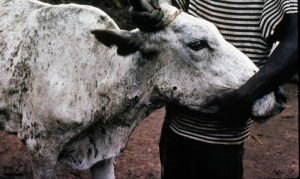Lumpy Skin Disease : Emerging Daily

With over 900 cattle infected with Lumpy Skin Disease (LSD) and more cases emerging daily, Pune district is staring at a potential decline in milk supply.
- Lumpy Skin Disease (LSD) is a highly infectious viral disease that affects all breeds of cattle and water buffalo.
- It is caused by the lumpy skin disease virus (LSDV), a member of the genus Capripoxvirus (CaPV) within the family Poxviridae (smallpox and monkeypox viruses are also a part of the same family).
- LSDV is not zoonotic, so humans cannot get infected by the virus.
- The disease is endemic in Africa and the Middle East and has been spreading increasingly in Europe and Southeast Asia over recent years.
- The disease is most common in the wet summer and fall months, especially in low-lying areas near water bodies, but it can also occur in the dry season.
- LSD is a highly host-specific disease. It primarily affects cows and to a lesser extent, buffalo.
- The disease is more severe in cattle compared to buffaloes in terms of morbidity and mortality.
- The disease is of economic importance as it can cause a temporary reduction in milk production, temporary or permanent sterility in bulls, damage to hides and, occasionally, death.
- It is transmitted by blood-feeding insects, such as certain species of flies, mosquitoes, or ticks.
- Infected animals shed the virus through oral and nasal secretions, which may contaminate common feeding and water troughs.
- Thus, the disease can either spread through direct contact with the vectors or through contaminated fodder and water.
- The disease is characterized by high fever and enlarged superficial lymph nodes on the skin and peculiar multiple nodules or lumps on the skin.
- It can also lead to death, especially in animals that have not previously been exposed to the virus or have low immunity.
- There is no treatment for the virus, so prevention by vaccination is the most effective means of control.
- The infected animals receive supportive care, which involves the use of antibiotics, painkillers, and wound care sprays to treat symptoms.




